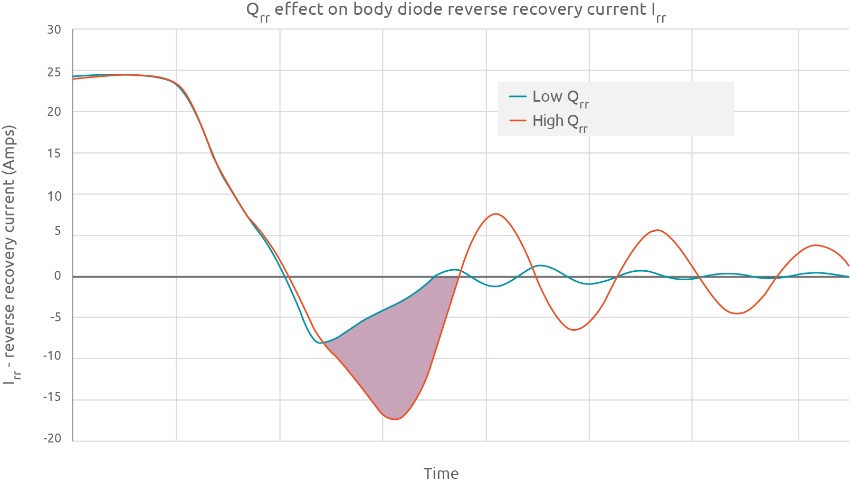Choosing a MOSFET for an efficient, low-cost power supply? Don’t forget to check the bottom of the datasheet too, as often that’s where you’ll find the Qrr specification.
As a designer, how do you go about choosing the right MOSFET for switching in a power supply? Well it has to have the right voltage and current ratings of course. Efficiency is important too, so you check its RDS(on) and perhaps some dynamic parameters like gate charge and various capacitances. And it needs to fit into your design, so you look at how big it is and what package it comes in.
But do you ever let your eyes wander down to the bottom of the datasheet to consider Qrr? No? Perhaps it’s time you did.

Affecting your efficiency
Qrr or reverse recovery charge is the charge that accumulates in the PN junction of a MOSFET’s body diode when the diode is forward biased. In most applications, current flows through the body diode twice for each switching cycle, causing charge to build up. The later dispersion of that charge, either within the MOSFET itself or as an additional current through the high-side MOSFET, causes losses in the system.
A spiky character
That additional current – known as Irr – can have other effects. For example, by interacting with the PCB’s parasitic inductance, to cause spikes in the drain-source voltage (VDS). These spikes can be reduced by good PCB design – if you are aware there could be problem – and by choosing a low- Qrr MOSFET. If you don’t take these precautions, you will likely end up having to use a higher voltage grade (and therefore more expensive) MOSFET.
More inefficiency
But that still leaves a problem. Spikes at the drain pin can be capacitively coupled to the gate pin, leading to so-called ‘gate bounce’. If this gate bounce is higher than the MOSFET’s threshold voltage, the MOSFET can turn on when it should be off. With both the high-side and low-side MOSFETs on at the same time, you get shoot-through current between the power rails – causing major power losses and potentially destroying the MOSFET.
Qrr matters!
Despite this Qrr is often not given the attention it merits by system designers and MOSFET suppliers. If you look at 100 V MOSFETs with RDS(on) between 4 and 8 mΩ, you’ll find products with Qrr values 130% to 300% higher than some of our own NextPower 100 V devices.
| LFPAK56 | TO220 | I2PAK |
|---|---|---|
| PSMN8R5-100PSF | PSMN6R9-100YSF | |
| PSMN018-100PSF | PSMN018-100ESF |
How much does that matter? To find out, we carried out simulations for specific transistor type in a specific application. It showed that increasing Qrr by 2x increased voltage spiking by 8% and reduced efficiency by 5% (for a 5 A load current). For more details read the ‘Design note’ article in January’s issue of Future Technology Magazine - Qrr – the Forgotten Parameter in Power Efficiency.